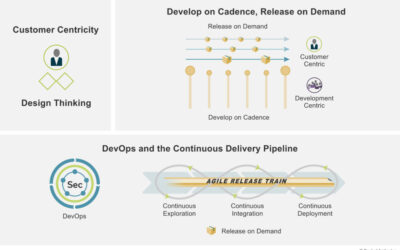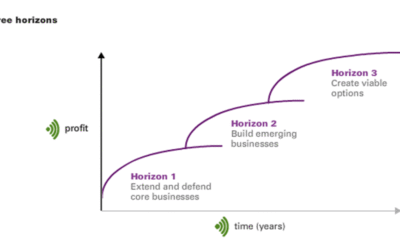How to Change Behaviour in the Workplace: A Complete Guide
In almost every change initiative there is an element of behaviour change. For some initiatives, the behaviour change in adopting a new habit required is large and complex whilst for others it can be as small as pressing different buttons and using a different user interface. Effective behaviour change, including incorporating new procedures, is one of the most critical outcomes that the change practitioner can hope to achieve. With the achievement of desired behaviours come the ultimate benefit associated with an initiative. On the other hand, not achieving the behaviour change targeted means that the change has not succeeded.
Given the importance of behaviour change in every initiative this article aims to cover key aspects of how a change practitioner should approach and design the behaviour change. Yet, successfully designing and implementing behaviour change is one of the most challenging tasks for the change practitioner. It is common place that many change practitioners do not have the experience to know how to achieve successful behaviour change.
The definition of behaviour change
So what is behaviour change?
Behaviour change “refer(s) to any transformation or modification of human behaviour”.
This seems like a fairly general definition that is all-encompassing and can include anything ranging from behaviour change in a psychological context or in a social or workplace context.
However, a key part of behaviour change is to recognise that behaviour, by definition, must be observable in some Shape or form. A behaviour can be verbal, non-verbal, or physical behaviour. However, a behaviour cannot be ‘perception’ or ‘thinking’ since these cannot be observed nor displayed necessarily.
Another feature of behaviour change is that the behaviour is to be changed from the current state to a future state. The quantum of the change determines the complexity of the change required and the extent to which a series of change interventions is required to achieve the desired future state. This means, if the behaviour change is easy from the impacted person’s perspective, then the change approach can be fairly light and does not need to be complex. However, if the quantum of the change is large, then a heavy design of change interventions is expected to achieve the outcome.

Some examples of behaviour change within a change initiative context includes:
- Using a different computer program interface with different layout or keystroke steps in performing tasks
- Different process steps required in disclosing financial details in business reporting
- Proactive coaching employees through feedback to improve sales effectiveness
- Reporting on risk incidents that are not compliant with company standards
- Actively establishing rapport with the customer to demonstrate empathy by acknowledging their feelings and demonstrating effective listening
- Speak up against bullying behaviours amongst colleagues
The importance of focusing on behaviour change
Inexperienced change practitioners will normally just followed the standard cookie-cutter approach of filling out the various change templates such as stakeholder matrix, change impact assessment, and a change plan. And then proceed to develop a communications plan or a learning plan as a part of experiential learning before executing on implementation.
So what is wrong with this?
As called out previously, in almost every change initiative there is a set of desired behaviours required to achieve the end state of the change initiative. The job of the change practitioner is to figure this out and design a change program around the achievement of these behaviours. Just by filling in templates and carrying out standard change approaches will most likely not achieve the targeted behaviours.
For example, in transitioning users from an old ERP system to a new digital system with a new look and feel, it is critical to identify the core behaviours required in the new state. Is it that in using the new digital system the user has access to a lot more timely data and therefore the behaviour change needs to be around 1) proactively checking for data and derive insights and 2) use these insights and data to make better decisions.
This means that if you were to just focus on communicating the change and train employees on how to use the new digital system, the whole project may not be deemed to be successful. This is because it is simply a project of ‘installation’ of a new system. However, the benefits targeted by the new digital system is about employees gaining more insights through the ability to easily access a range of data previously not available. Employees may know how to use the new system but it does not mean that they will automatically exhibit these desired behaviours.
One of the tricky things about behaviours is the ‘knowing’ vs. ‘doing’ conundrum. Just because someone knows how to do something it does not mean they will necessarily do it. Just because there is a pedestrian path, it does not mean that everyone will always use it. In a similar way, just because someone knows that the company wants him/her to document sales activities, it does not equate that all sales people will document all sales activities. In fact, in practice, we know that spending time on ‘admin’ such as documenting and entering sales activities into a system is often the last thing sales people want to do.
In the next section we will cover how to drive behaviour change.
How to achieve behaviour change

BJ Fogg model
Dr BJ Fogg is a Stanford professor who founded the Behavior Design Lab at Stanford University. BJ Fogg also wrote the New York Times bestseller ‘Tiny Habits’. What I love about this is that the Fogg model is incredibly simple and practical. It is grounded and backed up by significant empirical research and not just an ‘opinion’.
The Fogg model highlights 3 key elements that must converge at the same time for a behaviour to occur.
1. Motivation – Different motivators have different impacts on behaviour
2. Ability – This refers to how easy it is to undertake a behaviour. Some characteristics include time, money, physical effort, brain cycles (or ease of understanding and processing the task at hand), social deviance (the extent to which a behaviour is out of the social norm), and non-routine (behaviour that disrupts an existing routine)
3. Prompt/Trigger – These are reminders of events that prompt a particular behaviour. It could be an alarm, an associated image/event/person/scent, etc that reminds the person of the behaviour.
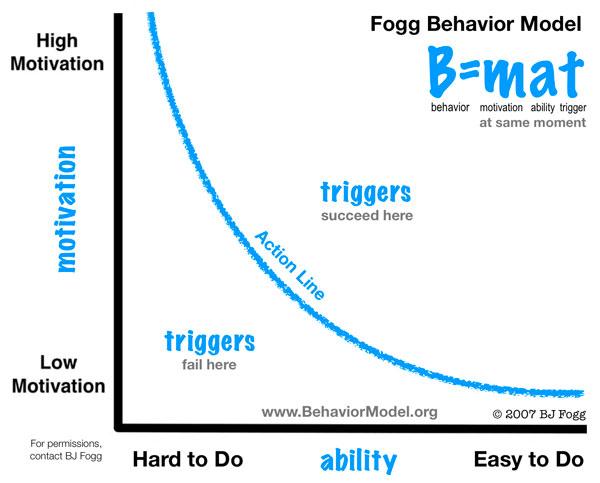
The power of this model is in its simplicity. You can apply this to any change initiative and the model will guide your thinking on how to design effective behaviour change. When something feels easy to do (low ability), then it will not require a lot of motivation to do it. Alternatively, when something is perceived as very hard to do, then it will require very high motivation to understate the behaviour. The key is to aim above the line. So, either focusing on increasing ability or increasing motivation will result in above the curved line, which means the behaviour taking place.
Example of applying the Fogg model
Case: You are implementing a cost cutting exercise due to the impact of Covid on the organisation. As a result of this exercise, the impacted employees will need to pick up parts of the roles of others who have been let go. The behaviour change required is that impacted employees will need to cover a broader set of tasks and at times have a heavier workload as a result.
Application:
Motivation: The impacted employee’s motivation is currently impacted after seeing their fellow colleagues lose their jobs and hence feeling worried that their jobs may be impacted. This is despite reassurances from senior managers that no more jobs will be cut for the time being. The challenge will be to sufficiently motivate these employees by continuously reassuring them of their job safety and working through the transition of having a broader role responsibility. Appealing to the focus on supporting customers and not letting them down may be a theme to reinforce.
Ability: It is critical to assess to what extent impacted employees are able to carry out new tasks assigned from a skill perspective. Training or coaching may be required. The other area to address is workload concerns. The perception that a heavy workload is required will hinder their likelihood of carrying out the additional responsibilities. Workload prioritisation and protocols are key topics to talk through to reassure employees how workload may eventuate during heavy periods.
Trigger: Different triggers may be designed to remind and reinforce the uptake of new accountabilities. These may include manager 1:1s, team reporting, open visual display of performance indicators, email reminders, colleague reinforcement/coaching, etc.
According to the Fogg model if the new accountabilities are significant it would be best to break these down into smaller behaviour increments vs a ‘big bang’ transition. It could be that there is a gradual transition whereby a period of continuous coaching is required after gradually introducing new sets of tasks for the employee to uptake and practice. After the transition period is completed, the employee then formally uptakes on the full accountabilities.
According to research findings, it is much easier to adopt the new behaviours if the discrete behaviours are broken down to small increment behaviours. Fogg has used lots of different examples of this one of which is doing push-ups. He started by doing 10. Then he would add 1 more every day to the push-up exercise, eventually getting to 100 push-ups. Adding a trigger to the new behaviour is also critical. For example, Fogg gave the example of doing sit-ups first thing in the morning as soon as you get up or doing pushups after going to the toilet. The event of getting up or going to the toilet then becomes a trigger for the new behaviour.
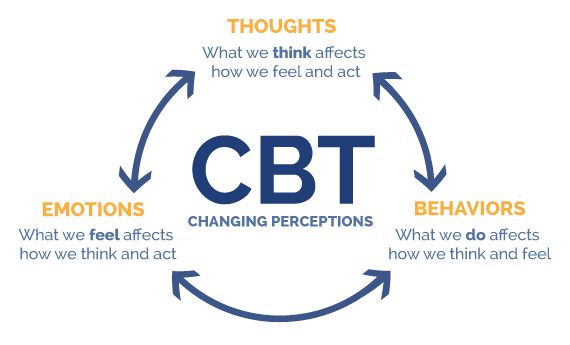
Cognitive Behavioural approaches to behaviour change.
Cognitive behavioural therapy is a widely established clinical approach to changing behaviours in patients suffering from various psychological conditions or disorders. Cognitive approaches are based on the fact that the way one thinks determines one’s reaction and therefore one’s behaviour. For example, self-talk is a mechanism to change one’s opinion or perception. Constantly reinforcing and verbalising positive statements about oneself may improve one’s own perception of oneself. Alternatively, constant negative self-talk leads to negative self-perception.
Behavioural approaches are based on research that started with Pavlov’s research on dogs where he associated bells as a trigger for food. After a period of time, every time the dogs heard the bell they would start salivating, with salivating being the behaviour. This process of associating a trigger with a behavioural reaction is also called ‘conditioning’. The process of conditioning is to ‘re-program’ the subject so that a new behaviour is introduced in reaction to a trigger.
There are many ways in which cognitive behavioural approaches may be applied to changing a person’s behaviour. For example, lets use the previous example of implementing a new system.
Creating or changing impression of the new system
A communications campaign may be devised to create or change the existing impression of the new system. This would be similar to any marketing campaign that associated particular imagery or messages with a feeling or impression. Over a period of repetition, the employees will start to associate positive impressions and key messages with the new system. Any tag-lines that are reinforced by manager briefings or town hall sessions would also act the reinforce the same messages.
As a part of the formal training for the new system, it could be that other than learning the ins and outs of operating the new system, the employee needs to be more proactive in looking at customer information to provide more value-add suggestions to the customer. Practices during the session, along with small nudges and subsequent reinforcements by the team leader or manager, through a corporate social learning platform, would act to build the behaviour change.
The trigger for new behaviours could be any acronyms, diagrams, tag lines, or pictures, and short videos and infographics created as a part of the campaign or training content. It is however important that there is a period of positive reinforcement or else the behaviour may not occur. The reinforcement may take form in terms of manager support, communication messages, prizes, competitions, and reporting on behaviour progress.
This is why post-release embedment is so important as the embedment process focuses on constantly reinforcing the behaviour so that it becomes second nature. Without this, the newly acquired behaviour will not be sustained. This is like exercise. Exercising a few times and your body starting to get the drift of what to do is just the start of the change. Without a period of constant exercising, it will not become a habit.
The other important cognitive behavioural approach to embedding new behaviour is ensuring adequate and effective social support. Some employees may be quite self-sufficient and are able to resolve any system issues themselves. Others may require a lot more hand-holding. This is why there must be change champions in place who can coach and support employees, as highlighted by social learning theory, as an effective way to support the right behaviours and resolve any obstacles in adopting the new system fully.
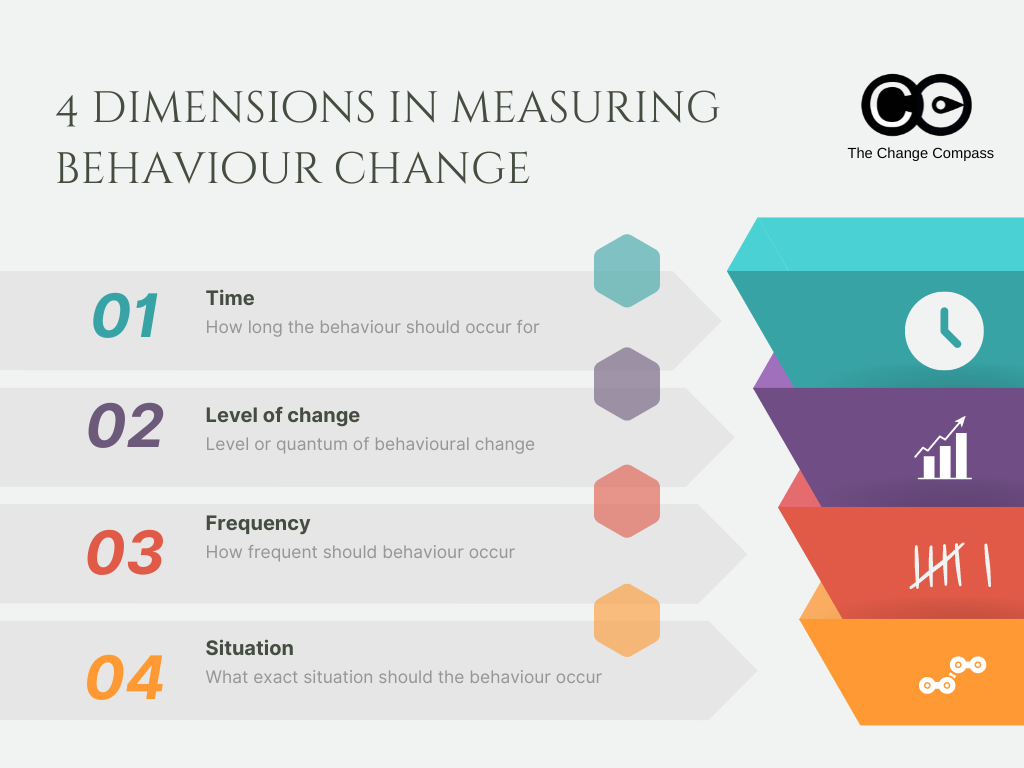
How to measure behaviours
Measuring behaviours is absolutely critical because without effective measurement it is difficult to ascertain to what extent the desired behaviours have been obtained and sustained. It is the old adage “What gets measured matters”.
So what are some of the ways in which to measure behaviours? These are some common examples.
- Manager rating based on observation
- Video recording
- Phone/call listening
- Attendance (e.g. training)
- Test
- System/digital reporting that tracks behaviour in a system
- Employee-wide surveys specifically designed to focus on targeted behaviours
What categories in which to measure behaviours?
There are many considerations or dimensions in measuring behaviours. The following are some of these:
- Time: How long would you want to measure the behaviours to ensure that they have fully embedded and incorporated into business-as-usual. Typical practice is several months after the ‘release’. Tracking reinforces behaviours. This means the longer the tracking mechanism continues – the more likelihood the behaviours will last longer
- Level of behaviour change: Is the behaviour being measured black and white in its determination? I.e. is it easy to categories if the behaviour has occurred or not? Or are there different levels of behaviour achievement? E.g. If you are measuring if call centre staff has exhibited behaviour is reviewing customer data and offer suggestions, are there different levels of ‘value add’ behaviours based on customer data, in which case there could be a scale to rate this. Alternatively, it could also be a yes/no type of classification
- Frequency: How frequent is the behaviour being displayed? Is it that the goal is to promote the frequency of the desired behaviour? Or are there certain limits expected? For example, if we would like call centre staff to offer value add calls with the customer, are there particular ‘ceilings’ or limited after which it may no longer be valuable for the customer?
- Situational considerations: Ranking and classifying behaviours should also always consider situational factors. For example, it could be that the customer was not in the right emotional state to receive value-add suggestions and therefore the behaviour would not be appropriate for that situation. It could also be that the call centre consultant has been suffering from sickness or has been struggling with family difficulties and therefore for a period of time was not performing effectively. As a result, previously acquired behaviours could have dropped temporarily

How do we drive full embedment of behaviours?
These are some key call-outs in ensuring that the behaviours you have set out to transition to not only are achieved but are sustained, and to prevent relapse. Pretty much all aspects of change could determine the extent to which behaviours become adopted or not.
1. Executive sponsorship and drive. You will hear a lot of this in literature and articles that with executive sponsorship and drive it is much easier for behaviours to be sustained.
2. Employee community support and reinforcement. This point acts almost as the balancing point of the previous one. With sufficient employee community support and reinforcement, it is possible to drive continual behavioural reinforcement even without strong executive sponsorship.
3. Measurement and reporting. With the right measurement and reporting, employees receive feedback on what their performance has been, and this constant feedback acts as a strong reinforcement feedback loop for managers, training teams, and their direct reports. This is especially the case if everyone can see others’ behavioural performance. It could be by business unit or individual, but ‘naming and shaming’ can work if that is consistent with the organisational cultural values.
4. Early and continuous engagement. This is a change management 101 point. With early and continuous engagement workflow, impacted team members will feel much more engaged with the change. As a result, they will want to exhibit the desired behaviours to make it a success because they feel that they are the ones driving the changes. Alternatively, if the change is perceived as designed and implemented by another party without consultation with the impacted group, there could be resistance or a lack of embedment during the contemplation phase.
5. Culture of continuous improvement. A culture of continuous improvement can also support continual and full embedment of behaviours. If there is a strong culture of analysing the current performance and working on root cause analysis for performance improvement, along with teamwork on appropriate actions to improve performance, then behaviours will be adopted. In this situation, any situational or personal factors or not exhibiting behaviours may be called out and addressed to achieve the targeted outcome.
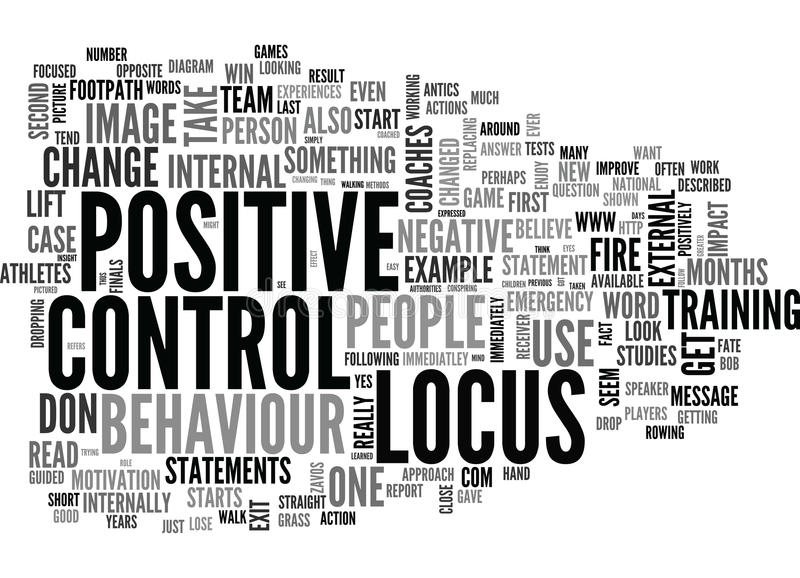
Complexity of embedding multiple behaviours across multiple initiatives
Most organisations are implementing multiple initiatives at the same time. This is the norm as organisations stay competitive, stay relevant, and in business. When multiple projects are going on all driving seemingly different behaviours.
How do we embed multiple behaviours?
1. Understand the different behaviours across initiatives. Rather than focusing on every single behaviour driven by every initiative, the key is to capture and record the top few behaviours targeted by each initiative. For large organisations with lots of initiatives, this may seem like an impossible feat. It could be organising 1-2 workshops to capture these behaviours. Do note that different initiatives may be at different stages of the product life cycle and therefore it may not be possible to capture all behaviours at a particular point in time. Having a regular change portfolio meeting where this could be discussed and captured iteratively would be ideal.
The Change Compass has just released a feature to aid the collection of core behaviours across initiatives so that these may be analysed, understood, and linked to aid better implementation alignment. You can tag key target behaviours to each initiative or project. For example, customer-centricity or efficiency. Then you can look through those initiatives impacting one part of the business and the core behaviours being driven across multiple initiatives.
2. Analyse and group the captured behaviours. After compiling the behaviours across initiatives the next step is to group and understand them.
- Are there behaviours that are part of the same theme? For example, what are initiatives that are promoting a closer focus on the customer by promoting better listening and empathy skills?
- Are there any behaviours that are ‘contradictory’ to other behaviours? Here is a real example. For a bank, one initiative was tasked to retire and close off a particular credit card due to a lack of profitability. However, at the same time, the same team was asked to try and sell more of their business unit head to meet their sales target.

3. Examine behaviours that are grouped into the same theme and think of ways to better align and join the dots to improve execution and behaviour embedment. This step is the most crucial step and involves running workshops across initiatives to better align approaches and plan for synergistic implementation of change across initiatives. Key discussion points or opportunities may include:
- Aligning key messages and positioning for common behavioural themes. For example, if 2 initiatives are focused on improving customer-centric, how might these better align their communication activities, look and feel of communications collateral, wording, and positioning of behaviours.
- Align, cross-leverage and cross-reference learning content. If multiple initiatives are all driving common behaviours, can content be cross-reinforced across multiple initiatives to drive a consistent and aligned user experience? This also ensures that there is no duplication of efforts in covering the same content
- Align the sequencing and implementation of change activities. If 2 initiatives are both driving similar behaviours, can the various change activities be better sequenced and aligned to drive a better outcome than 2 separate siloed approaches? For example, can the executive sponsor speak to both initiatives in their town hall address, and can change champions be cross-leveraged to talk about both initiatives to help impacted teams join the dots around the common behaviours?
Successful and fully embedded behavioural change is the epitome of successful change and transformation initiatives. Achieving this is not always easy but having the right focus and adopting a structured approach to design behaviour change will ensure initiative success. Don’t be afraid of experimenting to test different ways in which to drive behaviour change. Keep iterating with different approaches to drive the full adoption of behaviours, which in turn will then ensure the full achievement of initiative benefits.
Read More: A New Guide For Improving Change Management Maturity





